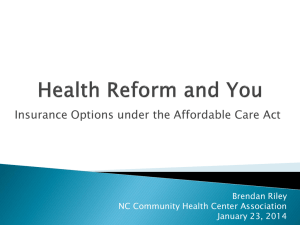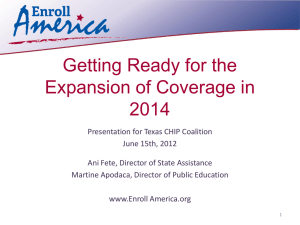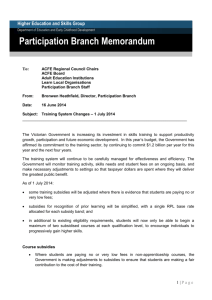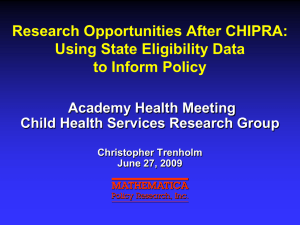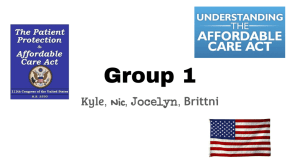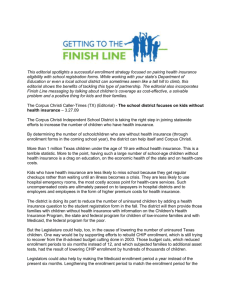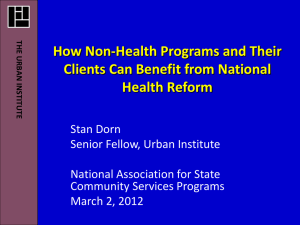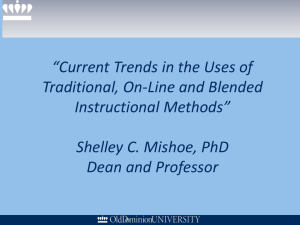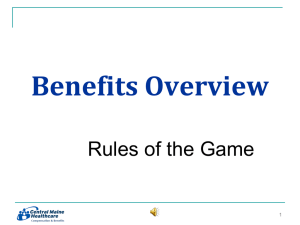April Todd-Malmlov, Minnesota Department of Commerce, Health
advertisement
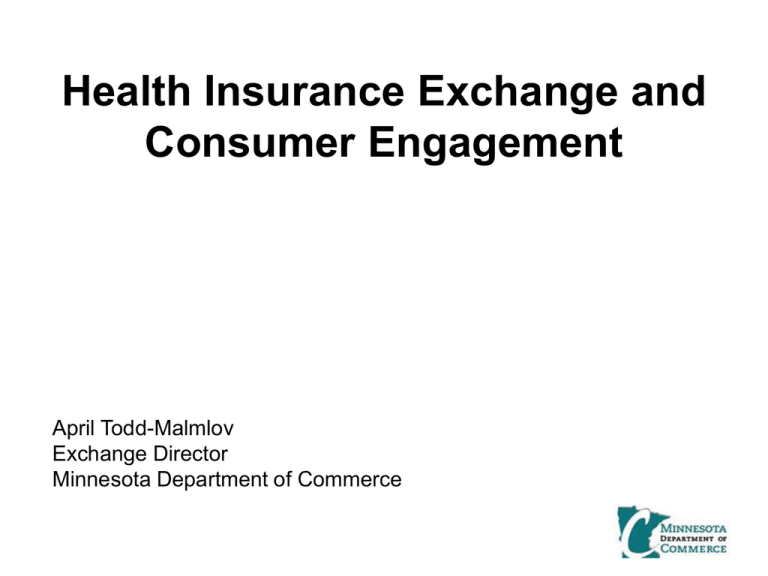
Health Insurance Exchange and Consumer Engagement April Todd-Malmlov Exchange Director Minnesota Department of Commerce Existing Market Challenges • Quality is improving but unequal • Too little consumer engagement Health Improvement • Health care is too complex • Lack of information to make informed decisions Consumer Experience Affordability • Unsustainable health care cost growth • Growing uninsured • Small employers dropping coverage 2 Challenges for Competition Imperfect Information Lack of Consumer Engagement Barriers to Health Care Market Competition Lack of Mobility and Portability Too Few Sellers 3 Exchange Opportunities Advance the Triple Aim • Potential incentives for health improvement • Simple one-stop shop • Streamline access to public and private coverage • Financial assistance for individuals and small businesses • Aggregate contributions for one health plan Enhance Market Competition • Transparent “apples to apples” comparison information • Foster market competition on value and affordability • Engage consumers in well-informed decision making • Choice, mobility, and portability • Reduce barriers to entry for newer and smaller insurers 4 Exchange Functions • Provide one-stop shop including a call center and website • Ensure health insurance plans meet certain standards • Provide comparative information on health benefit plans, costs, quality, and satisfaction using a standard format • Set up open enrollment and special enrollment periods • Facilitate “real-time” eligibility and enrollment using a uniform format • Determine eligibility for individual and employer tax credits, Medicaid, and coverage requirement exemptions • Communicate with employers regarding employee subsidy eligibility, cancelation of coverage, and penalty liability • Establish a “Navigator” program • Additional functions for small employers: Employee choice and premium aggregation Eligibility and Enrollment • Eligibility: Individuals, Small Groups, and Medicaid • General Individual Market. Individual Subsidies (100-400% FPL): Through Exchange to those not eligible for “affordable” employer coverage. Subsidies limit “Silver plan” premiums to 2 - 9.5% of income and costsharing subsidies limit actuarial value to 94 - 70% for silver plan (100-250% FPL). • Small Employers: Eligible up to 100 employees, state can limit to 50 employees until 2016. Sliding scale tax credits through Exchange for 2 years for up to 50% of employer premium portion for < 25 employees and < $50,000 average wage. • Medicaid Eligibility (<133% FPL) • Enrollment: • Plans must provide essential benefits and fit an actuarial level (Bronze, Silver, Gold, Platinum, or “Young Invincible”) • Subsidies and cost-sharing based on “Silver Plan” Behavioral Segmentation • People have different needs, desires and expectations – user experience needs to be responsive to all Passenger Get it done for me Apprentice Hold my hand Manager Keep me posted Engineer Get out of my way 7 Design Principles • Grounded in different user needs and serve to inspire creative solutions to address those needs Give Me Direction Keep Me Moving Support Me My Way 8 Contact Information • April Todd-Malmlov Exchange Director Department of Commerce email: april.todd-malmlov@state.mn.us phone: 651-296-6572 Exchange website: http://mn.gov/commerce/insurance/topics/medical/exchange/index.jsp
